Walk into any bar and you’ll hear the eternal debate: lager or pilsner? The truth might surprise you. Despite what many beer enthusiasts believe, this isn’t actually a case of choosing between two competing beer categories. The lager pilsner difference is more nuanced than most people realize, and understanding this relationship will fundamentally change how you think about these popular beers.
The confusion between lagers and pilsners represents one of the most common misconceptions in the beer world. Many people treat them as separate, competing styles when the reality is far more interesting. This comprehensive guide will clear up the confusion, explore the fascinating history behind both styles, and help you make more informed choices the next time you’re deciding what to drink.
There is a wide variety of brews available, including lagers, pilsners, and their subcategories, each with unique origins and characteristics that make them stand out among beer styles.
Introduction to Beer Styles
Beer is one of the world’s most diverse and beloved beverages, with a vast array of styles that cater to every palate. Among the most popular—and often most misunderstood—are pilsner and lager. While these terms are sometimes used interchangeably, they actually refer to different categories within the beer world, each with its own unique brewing process, ingredients, and flavor profile.
At its core, pilsner is a type of pale lager that originated in the Czech Republic, specifically in the city of Pilsen, home to the legendary Pilsner Urquell Brewery. This iconic beer style is typically brewed with soft water, pilsner malt, and the renowned Saaz hops, resulting in a golden beer with a crisp, refreshing taste and a signature spicy flavor. The use of bottom fermenting yeast—also known as lager yeast—at cooler temperatures is essential to the brewing process, giving pilsners their clean finish and bright character.
Lagers, on the other hand, represent a broader family of beers that includes not only pilsners but also styles like helles, dunkel, and bock. All lagers are brewed with bottom fermenting yeast, which works slowly at lower temperatures to produce a smooth, crisp, and often slightly malty taste. The use of barley malt and a variety of hops allows for a wide range of flavors and colors, from the pale, hoppy notes of a German pilsner to the deep, rich complexity of a dark lager or dunkel.
Pilsner style lagers, such as the original Pilsner Urquell, are celebrated for their straw yellow hue, lively carbonation, and balanced blend of malt sweetness and spicy hop bitterness. American pilsners, meanwhile, may use different malts or adjuncts, resulting in a slightly sweeter and sometimes more hoppy flavor profile. Czech pilsner, also known as Bohemian pilsner, is famous for its rich, malty backbone and pronounced Saaz hop character, while Belgian pilsner often features a touch of fruitiness and spice from special yeast strains.
In contrast, dark lagers like dunkel are brewed with darker malts, offering flavors of chocolate, caramel, and roasted grain, and often have a higher alcohol by volume (ABV) than their pale counterparts. Helles lagers provide a malt-forward, bread-like flavor, while bock beers are known for their robust maltiness and elevated ABV.
With so many styles and subcategories, the world of beer offers something for everyone. Understanding the differences between pilsner and lager, as well as other classic styles, helps beer lovers appreciate the unique qualities of each brew. Whether you’re drawn to the crisp, spicy notes of a pilsner or the rich, malty depth of a dark lager, exploring these styles is a rewarding journey for any beer enthusiast.
Quick Answer: The Main Difference
Before diving into the details, let’s establish the fundamental truth about the lager pilsner difference: pilsner is actually a specific type of lager, not a separate beer category. This means that while all pilsners are lagers, not all lagers are pilsners. Think of it like the relationship between squares and rectangles—every square is a rectangle, but rectangles come in many different forms.
Here are the main differences that set pilsners apart within the lager family:
- Pilsners are always pale golden in color, creating that distinctive straw yellow appearance that beer lovers recognize instantly
- Pilsners specifically use Saaz hops for their characteristic spicy, floral notes that create a more complex flavor profile
- Lagers encompass a broader range of colors from pale yellow to dark brown, offering much more visual variety
- Both use bottom-fermenting yeast and require cold fermentation temperatures, which is what makes pilsners part of the lager family
- Pilsners tend to have a more pronounced hop character compared to many other lagers, which often emphasize malt sweetness
This hierarchical relationship explains why the brewing process shares so many similarities while the final products can taste quite different.
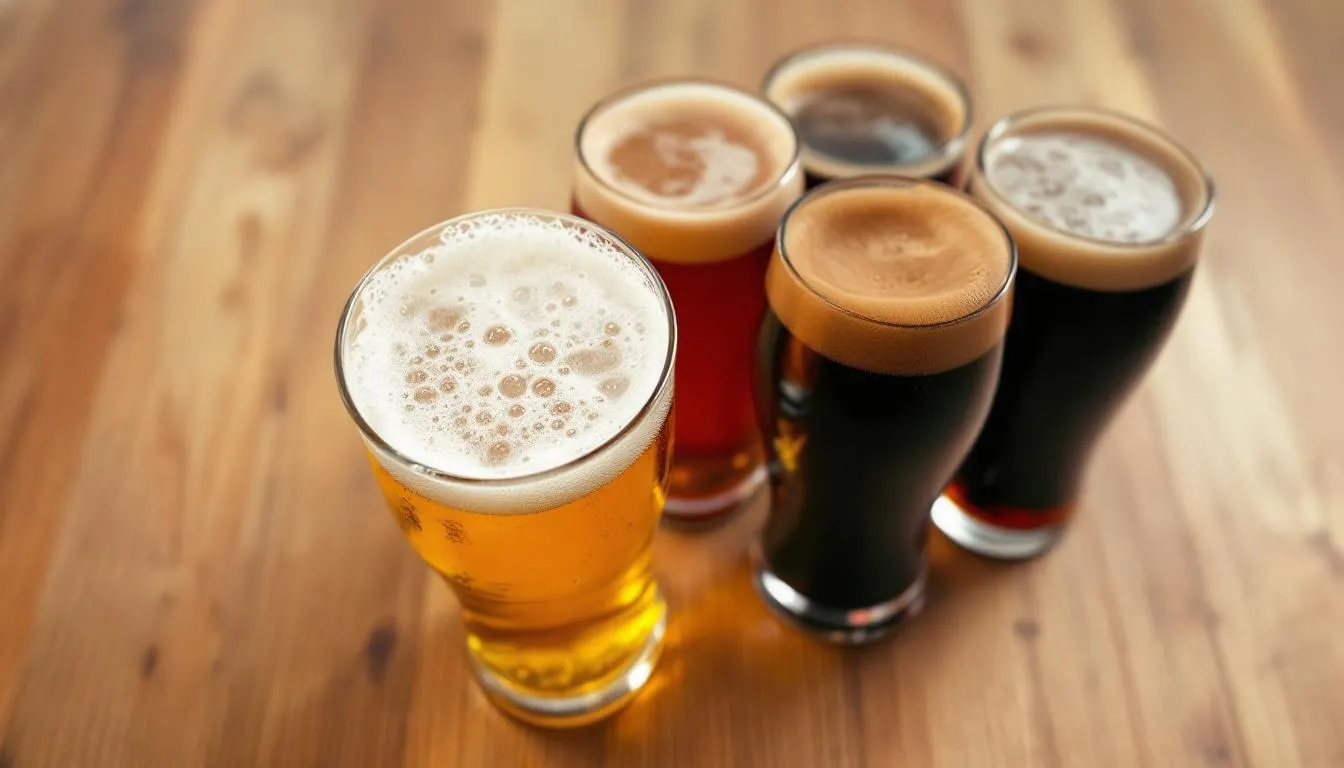
What is a Lager?
Understanding lagers requires examining both their technical brewing characteristics and their rich historical development. Lagers represent one of the two primary beer categories that all beers fall into, with ales being the other major division.
The defining characteristic of lagers is their use of bottom-fermenting yeast, scientifically known as Saccharomyces pastorianus. Lagers are bottom fermented, meaning the yeast settles at the bottom of the vessel during the fermentation process. Saccharomyces pastorianus is a hybrid of Saccharomyces cerevisiae and Saccharomyces eubayanus, and this hybridization allows the yeast to ferment at cooler temperatures and contributes to the clean, crisp flavor profile and clarity typical of lagers. This special yeast strain evolved specifically to work efficiently at cooler temperatures, typically ranging from 7-13°C (44-55°F). Unlike ale yeasts that prefer warmer conditions, lager yeast settles to the bottom of fermentation vessels, hence the term “bottom fermenting.”
The lagering process itself involves an extended cold storage conditioning period that can last anywhere from weeks to months. This extended aging process, combined with the cold temperatures and the unique fermentation process, creates the clean, crisp flavor profile that lagers are famous for. The German word “lagern,” meaning “to store,” perfectly captures this essential aspect of lager production that distinguishes it from faster-fermenting ales.
Modern lagers demonstrate remarkable diversity in both appearance and taste. Their alcohol by volume (ABV) can range from under 3% for light lagers up to over 10% for stronger styles like bock beers. The color spectrum spans from pale straw yellow found in light lagers to deep chocolate brown seen in dark lagers, showcasing the versatility of the style.
The brewing process for lagers requires patience and precision. Brewers must maintain consistent cold temperatures throughout fermentation and conditioning, making temperature control absolutely critical for success. This technically demanding process initially limited lager production to regions with naturally cold climates, though modern refrigeration has made lagers possible anywhere in the world.
What is a Pilsner?
Pilsner emerged as a revolutionary pale lager style with a specific origin story that forever changed beer history. In 1842, in the Czech Republic city of Pilsen (then called Plzen in Bohemia), Bavarian brewer Josef Groll created the world’s first pilsner at what is now known as Pilsner Urquell Brewery. This groundbreaking achievement represented the first successful pale lager, establishing a new standard for clarity and brightness in beer.
The creation of Pilsner Urquell marked a technological breakthrough that combined several key innovations. Groll utilized the region’s exceptionally soft water, which proved ideal for creating the crisp, clean, and crisper taste that defines pilsner beer. He paired this with specially developed pilsner malt that provided the golden color and subtle sweetness characteristic of the style.
Perhaps most importantly, Groll specifically chose Saaz hops for his creation. These hops, grown in the Bohemian region, impart the distinctive spicy flavor and floral aromatics that make pilsners instantly recognizable. The spicy, earthy character of Saaz hops creates a more complex, spicier, and assertive flavor profile compared to many other lagers, giving pilsners their signature bite.
Pilsner style lagers typically maintain an alcohol content between 4-6% ABV, making them approachable for casual drinking while still providing enough body to support their complex hop character. The crystal-clear appearance of pilsners, combined with their consistent straw yellow color, makes them visually distinct from other beer styles.
The influence of that original pilsner cannot be overstated. Pilsner Urquell remains in production today, still brewed in the same Czech Republic city where it was invented. This beer serves as the gold standard for understanding what authentic pilsner characteristics should taste like, with its perfect balance of malt sweetness and hop bitterness.
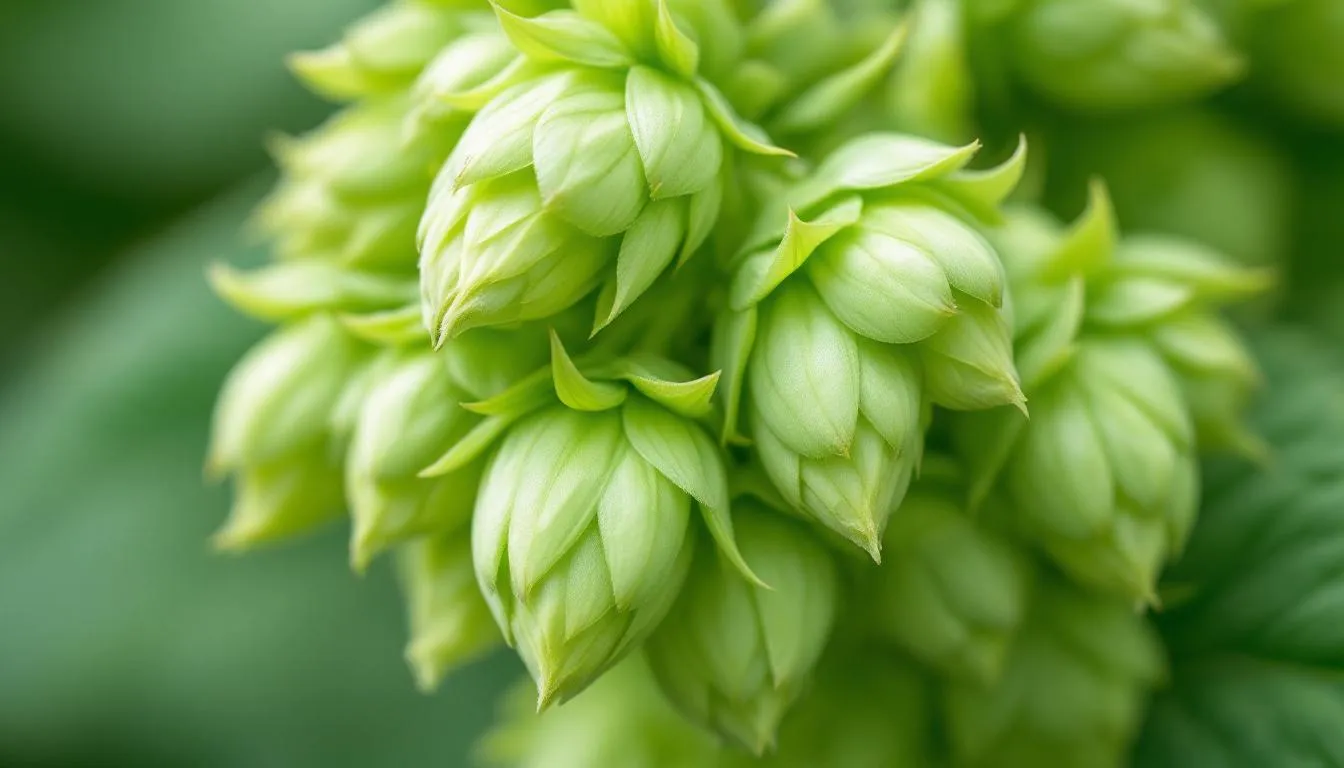
Brewing Process Differences
While pilsners and lagers share fundamental brewing similarities, several key differences in ingredients and techniques create their distinct characteristics. Understanding these brewing process variations helps explain why pilsners taste different from other lagers despite using the same basic fermentation method.
Both pilsners and lagers use identical bottom-fermenting yeast strains, specifically variants of Saccharomyces pastorianus. This shared foundation means they undergo fermentation at similar cold temperatures and require the same extended conditioning periods that define the lager family. The lager yeast works slowly at these cooler temperatures, producing fewer esters and phenols compared to ale fermentation, which results in the clean, crisp taste both styles are known for.
The most significant brewing difference lies in hop selection and usage. Pilsners specifically employ Saaz hops, which provide their characteristic spicy and floral notes. These hops are added at precise times during the brewing process to maximize their aromatic contribution while balancing bitterness levels. Other lagers may use various hop varieties or different hopping schedules, allowing for much more diversity in flavor profiles across the broader lager category.
Malt selection also differs between pilsners and other lagers. Pilsner malt, which is typically brewed using pale barley malt specifically processed to achieve the golden color and subtle sweetness, is essential for authentic pilsner production. Other lagers might incorporate different malt varieties, including darker roasted malts for amber lagers or even chocolate malts for dark lagers, creating the wide color and flavor range seen across lager styles.
Water chemistry plays a crucial role, particularly for traditional pilsners. The soft water originally used in Pilsen contributed significantly to the style’s success, as it allows the subtle malt flavors and hop character to shine without interference from mineral content. Modern breweries often adjust their water chemistry to replicate these conditions when brewing pilsner style lagers.
The lagering duration can vary between different styles within the lager family. While all lagers require extended cold conditioning, some styles may undergo longer or shorter lagering periods depending on their intended flavor profile and strength. This flexibility allows brewers to fine-tune the final product while maintaining the fundamental characteristics that define the lager category.
Taste and Appearance Comparison
The sensory differences between pilsners and lagers provide the most immediate way for beer drinkers to understand their distinction. These differences in taste, aroma, and appearance reflect the specific brewing choices that define each style category.
Pilsners maintain a remarkably consistent pale golden color that never varies into darker territory. This straw yellow appearance is so definitive that any beer calling itself a pilsner must display this characteristic golden beer color. The visual consistency across all pilsner varieties makes them instantly recognizable, whether you’re drinking a Czech pilsner, German pilsner, or American pilsner.
In contrast, lagers demonstrate tremendous visual diversity across their color spectrum. Light lagers appear pale and nearly colorless, while amber lagers show deeper golden to copper tones. Dark lagers can range from deep brown to nearly black, showcasing the variety possible within the lager family. This color range reflects the different malt choices available to lager brewers beyond the restrictions that define pilsner production.
The flavor profile differences are equally distinct. Pilsners deliver a more pronounced hop character with spicy flavor notes that come directly from Saaz hops. This creates a crisp, dry finish with noticeable hop bitterness that provides complexity and interest. The malt backbone in pilsners tends to be subtle, providing just enough sweetness to balance the hop assertiveness without overwhelming the palate.
Other lagers typically offer smoother, more rounded flavor profiles with less emphasis on hop character. Many lagers emphasize malt sweetness over hop bitterness, creating a bread-like or biscuit-like flavor foundation. Some lagers, particularly dark lagers, may incorporate flavors of coffee, chocolate, or caramel depending on their malt bill, options not available to pilsner brewers.
Carbonation levels remain consistently high across both pilsners and lagers, contributing to their refreshing quality and crisp mouthfeel. This elevated carbonation helps carry the aromatic compounds to your nose and creates the effervescent sensation that makes both styles particularly refreshing, especially when served at proper cold temperatures.
The alcohol content typically remains similar between pilsners and most light lagers, usually falling in the 4-6% ABV range. However, the broader lager category includes stronger varieties like bock beers that can reach much higher alcohol levels, while pilsners remain relatively consistent in their strength.
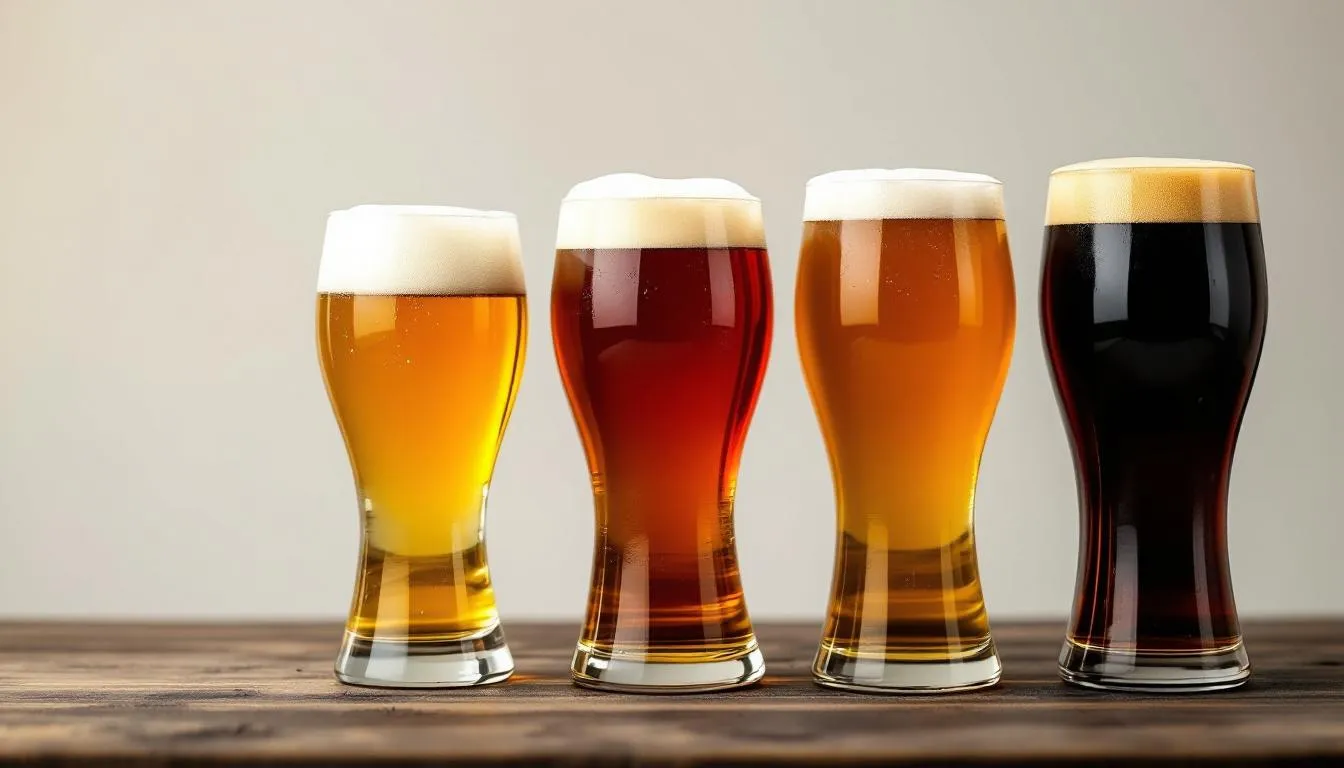
Types of Lagers Beyond Pilsner
The lager family extends far beyond pilsner, encompassing dozens of distinct styles that showcase the versatility possible within this broad beer category. Each style brings its own character while maintaining the fundamental bottom-fermenting yeast and cold conditioning that defines all lagers.
Helles represents Bavaria’s answer to the pilsner revolution, offering a more malt-forward alternative to hop-assertive pilsners. These light-colored lagers emphasize bread-like flavors and subtle sweetness while maintaining the clean finish characteristic of lagers. Helles typically brewed with minimal hop character, allowing the malt to shine through with gentle, biscuity notes that provide comfort and drinkability.
Märzen encompasses the amber-colored lagers most associated with Oktoberfest celebrations. These slightly sweeter lagers display beautiful copper to amber colors and feature rich malt flavors with hints of caramel and toast. Originally brewed in March (März in German) for consumption during autumn festivals, Märzen lagers offer more body and complexity than lighter lager styles while remaining smooth and approachable.
Dunkel represents the traditional dark brown lagers of Bavaria, offering robust flavors that come from roasted malts. These dark lagers feature flavors of coffee, chocolate, and roasted grain while maintaining the clean finish that separates them from dark ales. Despite their darker appearance, dunkel lagers often surprise drinkers with their smoothness and drinkability.
Dortmunder originated in Dortmund, Germany, as a balanced pale lager that falls between the hop-forward character of pilsners and the malt-emphasis of helles. These golden beers offer harmony between malt sweetness and hop bitterness, creating a well-rounded drinking experience that appeals to fans of both lighter and more assertive lager styles.
Bock encompasses the stronger, maltier lagers with higher alcohol content, typically ranging from 6-7% ABV or higher. These robust lagers emphasize rich malt flavors and often display deeper colors. Subcategories like Maibock, Doppelbock, and Eisbock each bring their own characteristics while maintaining the fundamental lager brewing process.
Each of these lager styles demonstrates the incredible diversity possible within the category while sharing the common foundation of bottom-fermenting yeast and cold conditioning that unites them all.
Types of Pilsners
While pilsners represent a more focused style category compared to lagers broadly, distinct regional variations have emerged that showcase different interpretations of the original Bohemian creation. These variations reflect local ingredients, brewing traditions, and taste preferences while maintaining the fundamental characteristics that define pilsner beer.
Czech/Bohemian Pilsner represents the original style created by brewer Josef Groll in 1842. These pilsners feature the classic Saaz hops that provide spicy, floral, and earthy aromatics. Czech pilsners tend to be slightly sweeter than their German counterparts, with a more balanced approach between malt sweetness and hop bitterness. The soft water of the Czech Republic contributes to their smooth mouthfeel and allows the subtle flavors to integrate beautifully.
German Pilsner evolved as German brewers adapted the pilsner concept to their own brewing traditions and ingredients. German style pilsners typically present a drier, more bitter profile compared to Czech versions. They often incorporate German hop varieties like Hallertau and Spalt alongside or instead of traditional Saaz hops, creating a more assertive hop character with crisp, clean finishing qualities that German brewing is famous for.
American Pilsner emerged as American brewers interpreted the European pilsner tradition using local ingredients and techniques. American pilsners often feature lighter body and may incorporate corn or rice adjuncts to create a more neutral flavor profile. These tend to be less hoppy than European versions and often emphasize drinkability and refreshment over complexity, though craft breweries have begun creating more hop-forward American interpretations.
Belgian Pilsner represents another regional variation, with Belgian brewers bringing their own perspective to the style. Belgian pilsners may incorporate subtle spice notes or use Belgian yeast strains that add complexity while maintaining the fundamental pilsner characteristics. These often bridge the gap between traditional pilsners and Belgian pale ales.
Each pilsner variation maintains the essential golden color and use of pale malts that define the style, while hop selection, water chemistry, and brewing techniques create the regional differences that give each type its distinct personality.
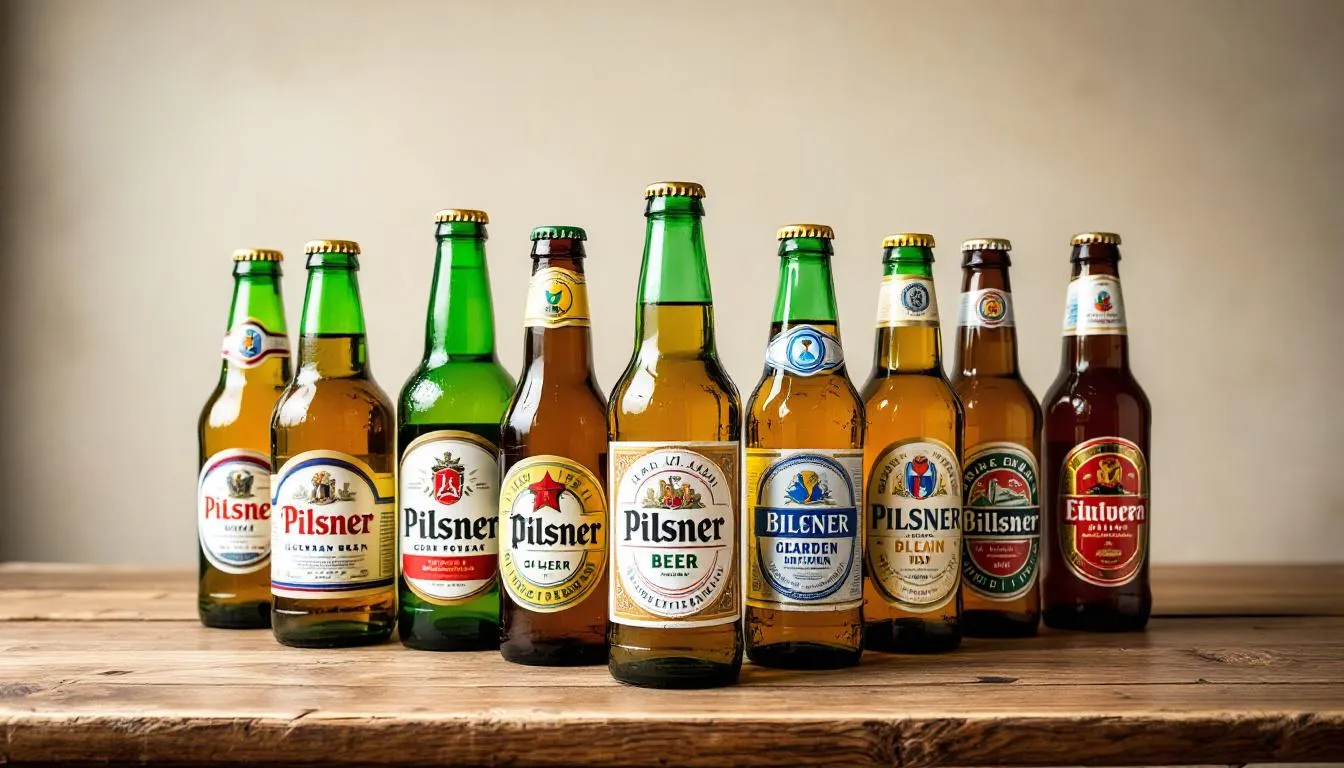
Popular Brand Examples
Understanding the lager pilsner difference becomes clearer when examining specific brand examples that represent each category. These real-world examples help demonstrate the characteristics we’ve discussed and provide reference points for your own tasting experiences.
Among pilsner brands, Pilsner Urquell remains the gold standard as the original pilsner created in 1842. This Czech pilsner showcases the authentic Saaz hop character and balanced sweetness that defines the style. Stella Artois represents a popular European pilsner with wide international distribution, offering accessibility to the pilsner style for many beer drinkers. Heineken provides another internationally recognized pilsner example, though it represents a lighter interpretation of the style compared to traditional Czech versions.
Craft beer examples of excellent pilsners include Prima Pils from Victory Brewing Company, which emphasizes traditional German pilsner characteristics, and Live Oak Pilz from Live Oak Brewing Company, showcasing American craft brewing’s interpretation of the classic style.
For broader lager examples, Budweiser represents the American pale lager tradition, emphasizing smooth drinkability over hop complexity. Corona offers a light lager example that’s designed for refreshment, often served with lime to enhance its crisp character. Samuel Adams Boston Lager demonstrates an amber lager style with more malt complexity than typical American lagers while remaining accessible to mainstream beer drinkers.
German lager examples include Löwenbräu Original for helles style and Spaten Oktoberfest for Märzen representation. These showcase traditional German brewing excellence across different lager substyles.
Yuengling Traditional Lager provides an American amber lager example that balances malt sweetness with clean finishing, while Shiner Bock represents the bock style with its slightly darker color and richer malt flavors.
Craft breweries have embraced both categories extensively. Brooklyn Lager offers an American amber lager interpretation, while Great Lakes Dortmunder Gold showcases the balanced Dortmunder style. These examples demonstrate how modern breweries continue innovating within traditional lager and pilsner frameworks.
The mass-market versus craft brewing distinction applies to both lagers and pilsners, with craft versions typically offering more complex flavors and traditional brewing methods compared to large-scale commercial production focused on consistency and broad appeal.
Which Should You Choose?
Choosing between pilsners and other lagers depends largely on your personal taste preferences and the drinking occasion. Understanding your own palate preferences will guide you toward the styles that provide the most enjoyment.
Choose pilsners if you enjoy:
- Spicy, floral hop character that provides complexity
- Crisp, dry finishes with pronounced bitterness
- Golden beer appearance with crystal-clear clarity
- More assertive flavors that engage your palate
- Traditional European brewing styles with historical significance
Pilsners pair exceptionally well with spicy foods, as their hop character complements heat while their crisp finish cleanses the palate. They also work beautifully with seafood, particularly shellfish and grilled fish, where their brightness enhances delicate flavors without overwhelming them.
Choose other lagers if you prefer:
- Smoother, more rounded flavor profiles
- Emphasis on malt sweetness over hop bitterness
- Variety in color and appearance
- Easy-drinking, approachable characteristics
- Bread-like or biscuit flavors
Other lagers offer tremendous food pairing versatility. Light lagers complement lighter fare like salads and grilled chicken, while amber lagers pair well with barbecue and roasted meats. Dark lagers excel alongside hearty stews, roasted vegetables, and even chocolate desserts.
Consider the occasion:
- Hot weather favors both pilsners and light lagers for their refreshing qualities
- Social gatherings often benefit from approachable lagers that appeal to diverse tastes
- Beer-focused dinners might showcase pilsners for their complexity
- Casual drinking sessions often suit smooth lagers over more assertive pilsners
Start your exploration systematically: Try representative examples from each major category to understand your preferences. Begin with a classic Czech pilsner like Pilsner Urquell to understand traditional pilsner characteristics, then sample a German pilsner to experience the style’s variation. Follow this with different lager styles—perhaps a helles for malt-forward character and an amber lager for balanced complexity.
Ales tend to offer more pronounced flavors and typically brewed at warmer temperatures, creating a useful contrast for understanding what makes lagers special. Many people find that their preferences shift between lagers and ales depending on seasons, moods, and food pairings.
The beauty of the lager family lies in its diversity. Whether you prefer the spicy complexity of pilsners or the smooth approachability of other lagers, there’s likely a style within this broad category that matches your taste preferences perfectly.
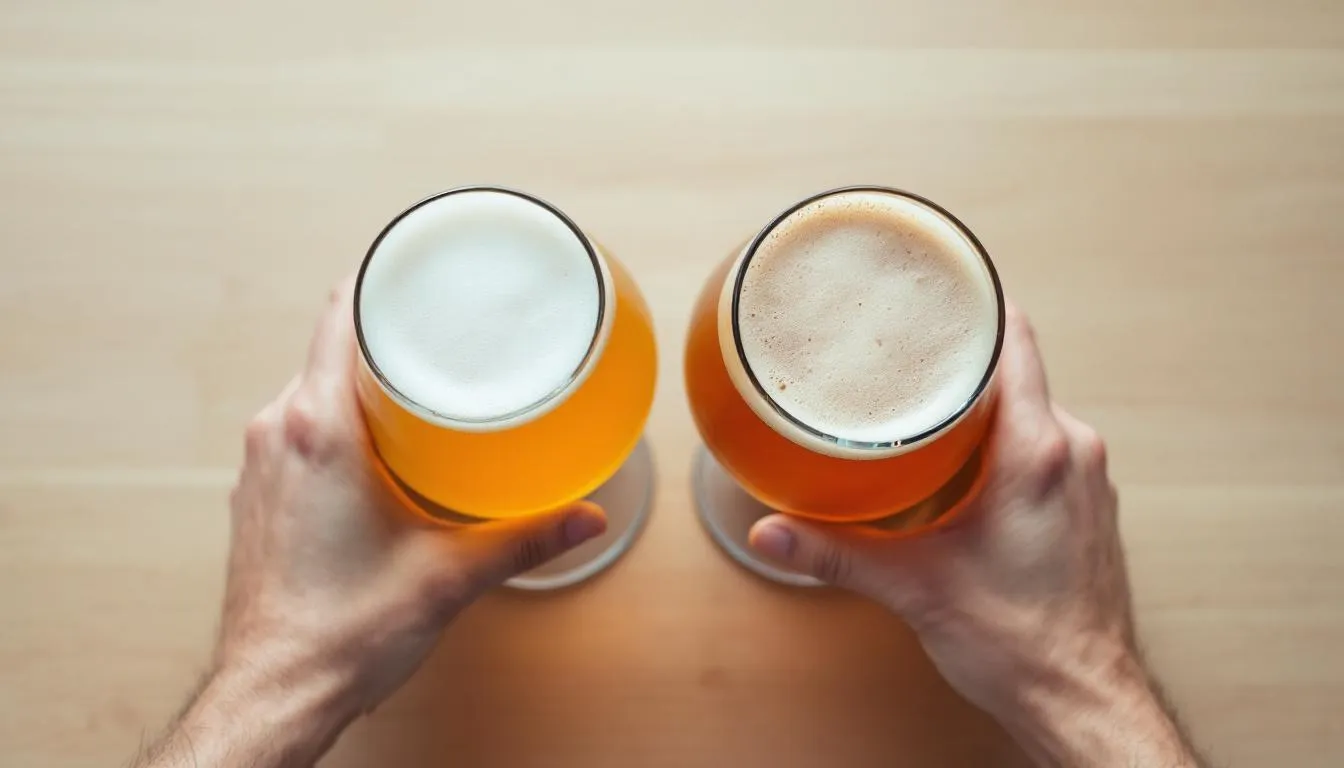
Conclusion
The lager pilsner difference ultimately comes down to understanding that pilsner represents a specific, highly refined expression within the broader lager family. While all pilsners are lagers, the reverse isn’t true—pilsners must meet specific criteria including their pale golden color, use of Saaz hops, and characteristic spicy flavor that sets them apart from their lager cousins.
This hierarchical relationship explains why both styles share fundamental brewing characteristics like bottom fermenting yeast and cold fermentation temperatures, while differing in their specific ingredients and flavor profiles. Pilsners bring hop-forward complexity and assertive character, while the broader lager category offers everything from smooth, malty experiences to rich, dark, robust flavors.
Understanding these distinctions empowers you to make informed choices based on your taste preferences rather than relying on marketing or misconceptions. Whether you gravitate toward the spicy complexity of a traditional Czech pilsner or prefer the smooth approachability of a Bavarian helles, you’re exploring different expressions of the same fundamental brewing tradition that has evolved over centuries.
The next time someone asks about the lager pilsner difference, you can confidently explain that they’re not competing categories but rather a family relationship that showcases the incredible diversity possible within beer brewing. Now that you understand these distinctions, grab a few bottles representing different styles and taste the differences yourself—there’s no substitute for firsthand experience when it comes to developing your beer palate.

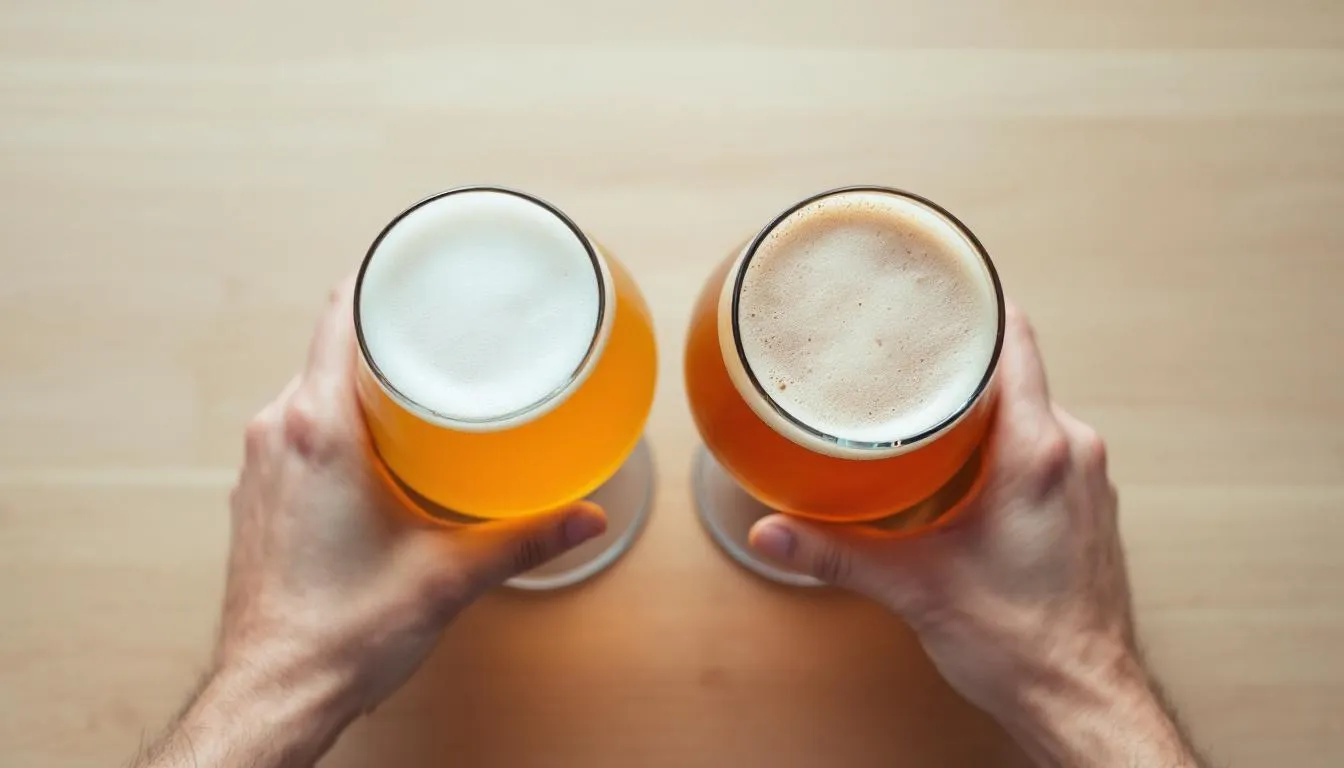
Leave a Reply